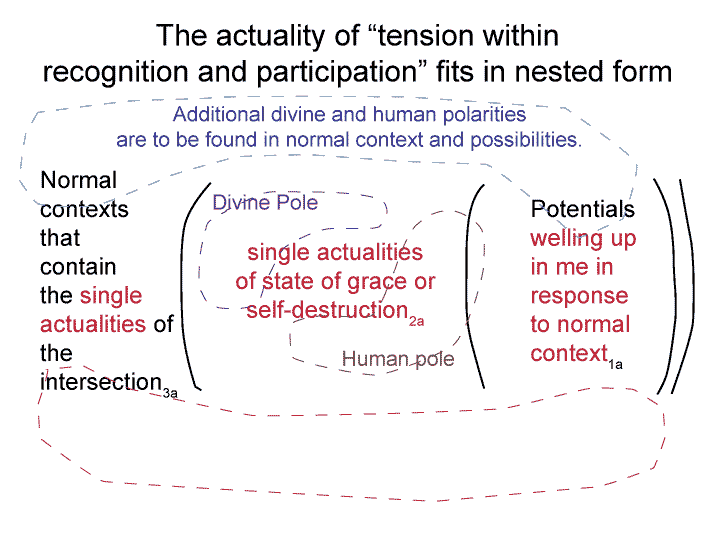Man and Sin by Piet Schoonenberg (1964) 2.1DZ
Summary of text [comment] page 69
[‘The single actuality of grace2a’ and ‘the single actuality of self-destruction2a’ are riven by contradictions. The impression is that the world resists our desires, because the actuality2a does not reveal that it contains an intersection. The content level normal context3a cannot see the intersection. It only sees the actuality2a.
These two contradicting actualities of the states of grace or self-destruction are contextualized by normal contexts that exclude one another.
I should say: The normal context strive to exclude one another.
The moment that either grace or self-destruction wins, the intersection is resolved. The winning single actuality appears in a normal context3a devoid of tension.
The person has become either a good or bad angel.]

